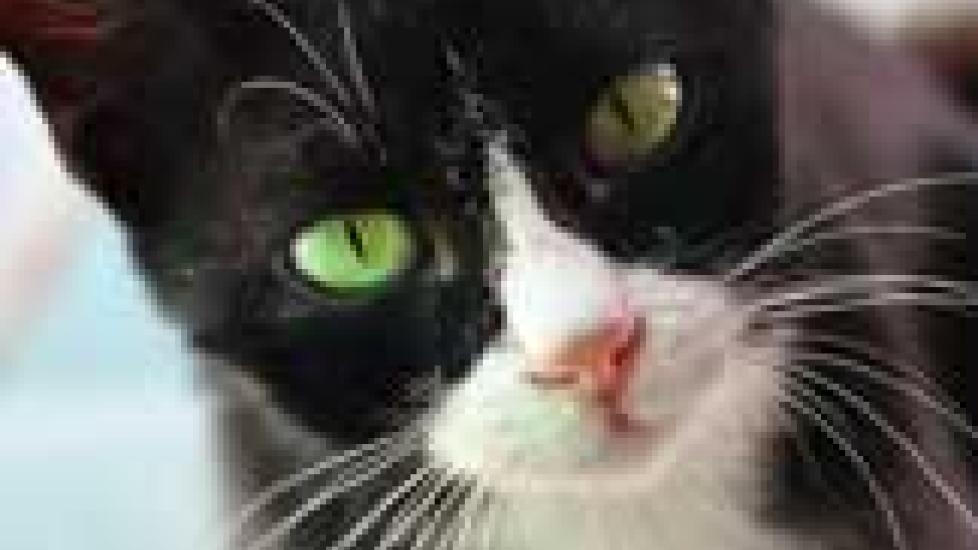Feeding Tubes for Cats
Most of my posts here on Nutrition Nuggets have focused on the nutritional needs of cats and how to pick out the right food that will meet those needs. That’s important information, but it doesn’t do much good when a cat won’t eat no matter what is put in front of her.
Cats that have stopped eating are invariably sick or injured, so a veterinary exam and appropriate diagnostic testing are essential parts of her recovery … but that’s not always enough to get a cat back on her feet. In some cases, a cat’s appetite may not improve even with rapid and appropriate treatment of the underlying problem. This can occur for a number of reasons, chief among them is a condition called hepatic lipidosis. When a cat does not take in enough calories, her fat stores are mobilized and sent to the liver. Too much fat arriving too quickly can overwhelm the liver, resulting in an accumulation of fat that disrupts the organ’s ability to function normally. Poor liver function causes the cat to feel even worse and be less likely to eat, which is the start of a vicious, downward spiral.
So what can we do in these situations? I bet some of you have had the "joy" of trying to force-feed a cat using a liquefied food and syringe. I am not a fan of this technique except in all but the most laid-back of kitties. I’ll give it a try once or twice, but if the cat puts up a fight or I’m having trouble getting enough food in, it’s time to consider a better option — a feeding tube. My favorites are nasoesophageal (NE) or nasogastric (NG)tubes or esophagostomy tubes.
NE/NG tubes are made of soft rubber and can be passed through one nostril into either the esophagus or stomach. Most cats tolerate tube placement with only a few drops of local anesthetic applied to the nose (sometimes a light sedative is necessary for fractious animals). They are an appropriate choice if it looks like a cat will only require a few days of supplemental feeding. The downsides of NE/NG tubes are that only certain types of liquid diets will pass through them and it is difficult to use the tube to give medications that are only available in pill form. Also, I am not comfortable sending cats home with an NE/NG tube due to the risk that it might become displaced and end up in the trachea.
When I have a strong suspicion that a cat will need prolonged nutritional support, I prefer to place an esophagostomy tube. It can remain in place for months; a mixture of canned food and water can be fed; medications pass through without trouble; and owners can easily learn how to use and maintain the tube at home. General anesthesia is required to place an esophagostomy tube, but the procedure is exceptionally quick and easy to perform.
There are times when neither an NE/NG tube nor an esophagostomy tube is an appropriate choice. In those cases, gastrostomy or jejunostomy tubes placed into the stomach or small intestine, or, as a last resort, parenteral feeding that involves the infusion of a sterile nutrient solution directly into the circulatory system are worth considering.
Whichever feeding tube is right for your cat, I recommend getting it in place sooner rather than later. The earlier a cat starts receiving the nutrition she needs, the faster we can expect her to recover.

Dr. Jennifer Coates
Image: Jordan Tan / via Shutterstock
